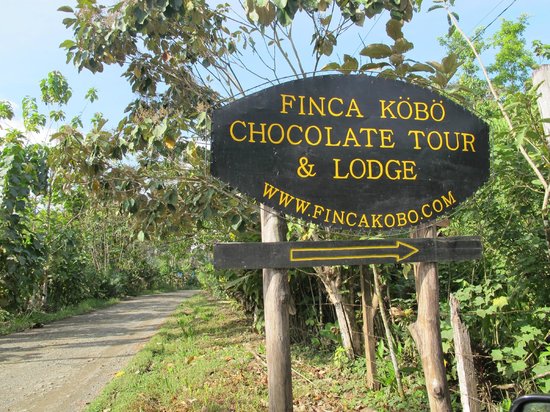
- Sustainable Planet -
- 5mins -
- 1,096 views
How one farmer in Costa Rica is saving the jungle by growing food in it
His approach, known as Agroforestry, brings together traditional agriculture and the cultivation of trees – allowing crops and forest to grow alongside each other.
Agroforestry created a whole new ecosystem in just a few years
“My dream is to create a sustainable farm, this is my work.” says Alexander Retana, a farmer with a different kind of farm. Finca Köbö grows around 22 different crops from bananas to cacao – in among the trees of the Costa Rican rainforest!
But today the scene is quite different from just a few years ago, when the area was open rice fields. Initially, Retana initially grew trees for shade from the heat of the sun. But things soon expanded as he planted more trees, until he’d created an entire new ecosystem above his head.
The approach, known as agroforestry, brings together traditional agriculture and the cultivation of trees – allowing crops and forest to grow alongside each other.
The canopy of trees doesn’t just provide shade for the farmer, though. “The trees help other plants to survive better in the farm,” he explains. Restoring the jungle increases precipitation and helps retain more moisture in the soil, while wildlife help control pests.
“We need to have crops and trees living together in the ecosystem,” Retana believes. “Agroforestry can exist everywhere in the tropical ecosystem around the world. This is one of the solutions to save the forest.”
Source: WorldEconomicForum

Agroforestry is defined as ‘agriculture with trees’ — However, it is so much more
Agroforestry is the interaction of agriculture and trees, including the agricultural use of trees. This comprises trees on farms and in agricultural landscapes, farming in forests and along forest margins and tree-crop production, including cocoa, coffee, rubber and oil palm.
Interactions between trees and other components of agriculture may be important at a range of scales: in fields (where trees and crops are grown together), on farms (where trees may provide fodder for livestock, fuel, food, shelter or income from products including timber) and landscapes (where agricultural and forest land uses combine in determining the provision of ecosystem services).
Agroforestry is agricultural and forestry systems that try to balance various needs:
- to produce trees for timber and other commercial purposes;
- to produce a diverse, adequate supply of nutritious foods both to meet global demand and to satisfy the needs of the producers themselves;and
- to ensure the protection of the natural environment so that it continues to provide resources and environmental services to meet the needs of the present generations and those to come.
Agroforestry involves a wide range of trees that are protected, regenerated, planted or managed in agricultural landscapes as they interact with annual crops, livestock, wildlife and humans.
There are numerous examples of traditional farming communities cultivating tree species in intimate combination with agricultural crops to create a healthy, harmonious symbiosis.
For example, farmers in Central America have been known to plant more than 20 different species of plants on plots of no more than one-tenth of a hectare, each with a different form, together corresponding to the layered configuration of mixed tropical forests.
These plots may contain coconut or papaya, with a lower layer of bananas or citrus, a shrub layer of coffee or cacao, tall and low annuals such as maize, and finally a spreading ground cover of plants such as squash. Such systems have multiple benefits, providing a diverse range of food, with trees providing shade and preventing erosion and water evaporation.
Numerous other examples can be found in traditional farming systems around the world, with many involving the integration of cultivated land with original forests that provide food, medicines, construction wood and cosmetics, in addition to their protective services.
Source: WorldAgroforestry.org

Benefits of Trees
Trees play a crucial role in almost all terrestrial ecosystems and provide a range of important products and services to both rural and urban communities. Most trees have multiple uses, including cultural ones, and typically provide a range of benefits. They have also been used as land-boundary markers and to confer land-use rights. Trees are fundamental for land regeneration to improve soil health.
In short, there is nothing better than a tree to simultaneously:
- Sequester carbon from the atmosphere
- Bring up water and nutrients from deep in the ground
- Provide a framework for above- and belowground biodiversity to flourish
- Build soil organic matter and thus soil carbon
- Create regulating micro-climates
- Provide fodder and shelter for livestock
- Innovate diversified farm enterprises
- Make agricultural landscapes more resilient
- Record climate history
For more information, check out World Agroforestry’s Publications database and the Project pages.
Source: WorldAgroforestry.org
THE BRAZILIAN PHOTOGRAPHER AND THE 20-YEAR REFORESTATION PROJECT OF OVER 2.7 MILLION TREES
This project is the result of an ambitious initiative taken in the late 1990s by renowned Brazilian photographer Sebastião Salgado and his wife Lélia Deluiz Wanick Salgado. Confronting environmental devastation in and around a former cattle ranch bought from Salgado’s family near the town of Aimorés, in Brazil’s state of Minas Gerais, they decided to return the property to its natural state of subtropical rainforest. The ongoing results are truly amazing. Learn more…

